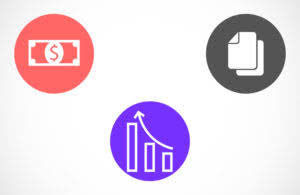
A sample presentation of the Other Expenses line item in an income statement appears in the following exhibit. As the investigation deepens, it’s beneficial to engage various members of the team, leveraging their insights and experiences. This collaborative approach can uncover patterns or practices that may not be immediately evident to the accounting department alone. For instance, employees on the sales floor might provide context about unusual customer interactions or system glitches that could have contributed to the discrepancy. Beyond the counter, discrepancies can arise during the cash counting process. Inaccuracies in this stage may be due to rushed counts, distractions, or simple miscounts.

Cash shortage journal entry
- The cash over and short account is an excellent tool for tracking down fraud situations, especially when tracked at the sub-account level for specific cash registers, petty cash boxes, and so forth.
- Surprise cash counts add an additional layer of security by preventing employees from preparing for the count, which can help to uncover any discrepancies that might otherwise be concealed.
- This information is then used to track down why cash levels vary from expectations, and to eliminate these situations through the use of better procedures, controls, and employee training.
- Assume that the company has a petty cash fund of $100 and its general ledger account Petty Cash reports an imprest balance of $100.
- The customer unwittingly gave me $96 for the purchase, an error we both failed to catch.
- It’s an “other expense” for you, not a normal expense like paying your bills.
On the other hand, if its balance is on the credit side, it will be presented as miscellaneous revenue instead. The opposite is true about transactions that produce cash shortages. Assume the same situation except Tom only receives $99 instead of $101.
![]()
What is the Journal Entry to Record a Cash Shortage?
- For the past 52 years, Harold Averkamp (CPA, MBA) has worked as an accounting supervisor, manager, consultant, university instructor, and innovator in teaching accounting online.
- This involves comparing the expected cash amounts, based on sales data or receipts, with the actual cash present at the end of a business day.
- On the other hand, if its balance is on the credit side, it will be presented as miscellaneous revenue instead.
- Therefore, the balance of cash short and over is on debit or credit depends on whether it is shortage or overage.
- Generally, the amounts in the account Cash Short and Over are so small that the account balance will be included with other insignificant amounts reported on the income statement as Other Expenses.
Auditors examine these reports to understand the frequency and magnitude of discrepancies, which can serve as indicators of the effectiveness of current internal controls. They may also provide recommendations for enhancing procedures to mitigate future occurrences. Most retailers’ accounting systems have a cash over short account setup because they generally deal with cash sales everyday. Ongoing education is equally important as it helps to reinforce best practices and keep staff updated on any changes in procedures or technology. By fostering a culture of continuous improvement and accountability, businesses can minimize the likelihood of cash handling errors. Moreover, employees who are well-trained and confident in their roles are less likely to make mistakes, contributing to a more secure and efficient cash management system.
- This is due to the cash remaining and the receipts in the petty cash box may not equal the amount of petty cash fund established.
- For instance, employees on the sales floor might provide context about unusual customer interactions or system glitches that could have contributed to the discrepancy.
- Cash Over and Short acts as a Revenue account when there is an overage.
- Inaccuracies in this stage may be due to rushed counts, distractions, or simple miscounts.
- Shaun Conrad is a Certified Public Accountant and CPA exam expert with a passion for teaching.
- Over and short—often called “cash over short”—is an accounting term that signals a discrepancy between a company’s reported figures (from its sales records or receipts) and its audited figures.
- Most retailers’ accounting systems have a cash over short account setup because they generally deal with cash sales everyday.
What Does Cash Over Short Mean?

When cash short and over is classified as a a cash discrepancy arises, a thorough investigation is imperative to unearth the root cause and prevent recurrence. The initial focus typically centers on the most recent transactions, as these are often where errors occur. It’s important to approach this inquiry with an open mind, considering all possible sources of error, from unintentional mistakes to deliberate acts of theft.
- Assume the same situation except Tom only receives $99 instead of $101.
- In most cases, customers will most likely to dispute a shortage of change.
- It should cover the proper use of cash registers, the importance of double-checking transactions, and the procedures for reporting anomalies.
- It’s “other revenue” for you, not a normal source of revenue like your paycheck.
Let’s illustrate the Cash Short and Over account with the petty cash fund. Assume that the company has a petty cash fund of $100 and its general ledger account Petty Cash reports an imprest balance of $100. Let’s now assume that when the petty cash fund is replenished, there is $6.00 on hand and there are $93.00 of petty cash vouchers. The cash over and short is recorded on debit when there is a shortage. In contrast, the cash over and short is recorded on Restaurant Cash Flow Management credit when there is overage.

This classification helps in identifying whether these discrepancies are one-off incidents or part of a recurring pattern. Recurring issues may prompt a deeper evaluation of company practices and employee training programs. The insights gained from audit reports can drive strategic improvements in cash management protocols, ultimately strengthening the company’s financial foundation. Tracking Cash Over and Short is an important piece of protecting a company’s most valuable asset, Cash, from theft and misuse. It may seem like a small item to QuickBooks track, but think of it from the point of view of a retail or restaurant chain where millions of dollars pass through the cash registers every day.